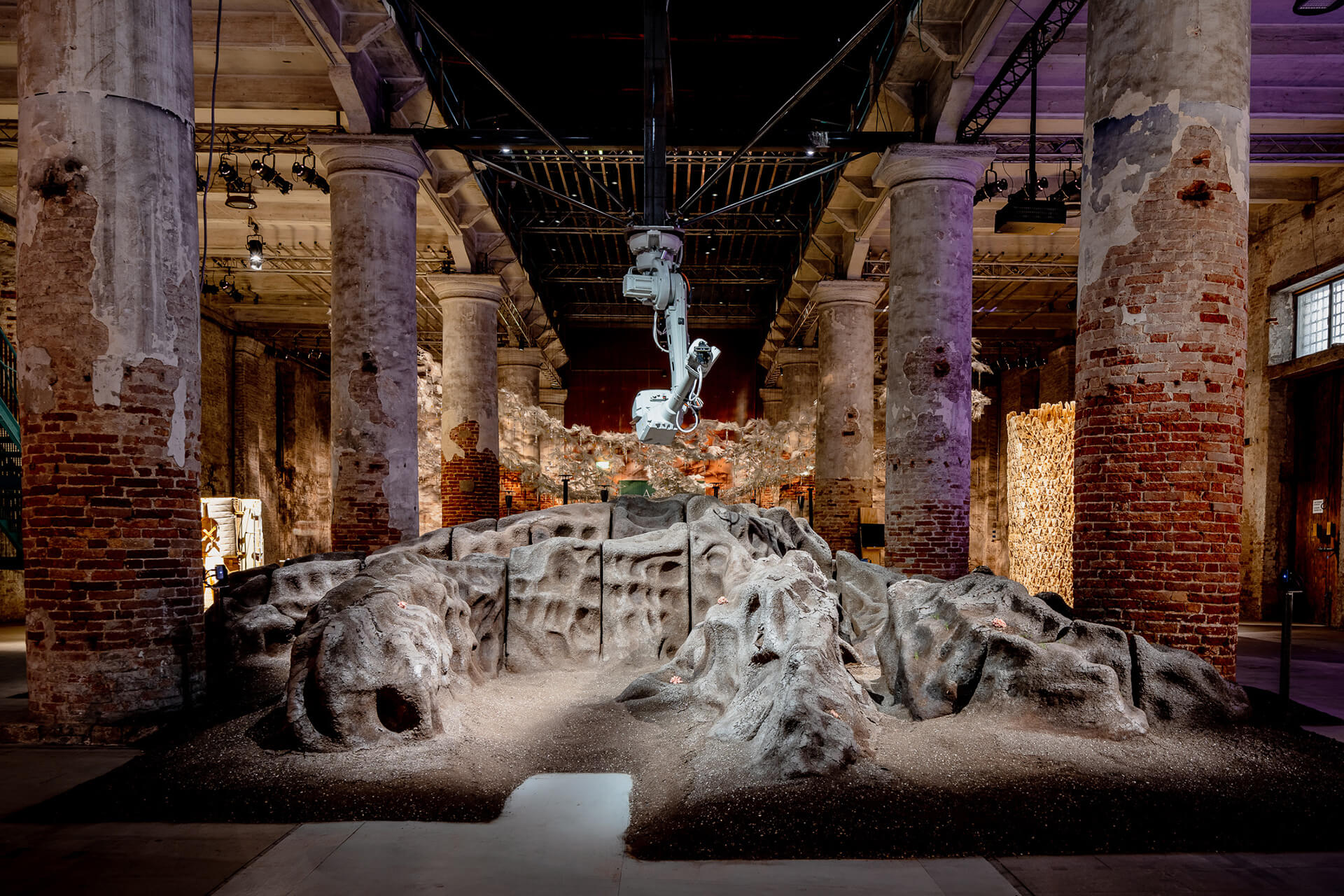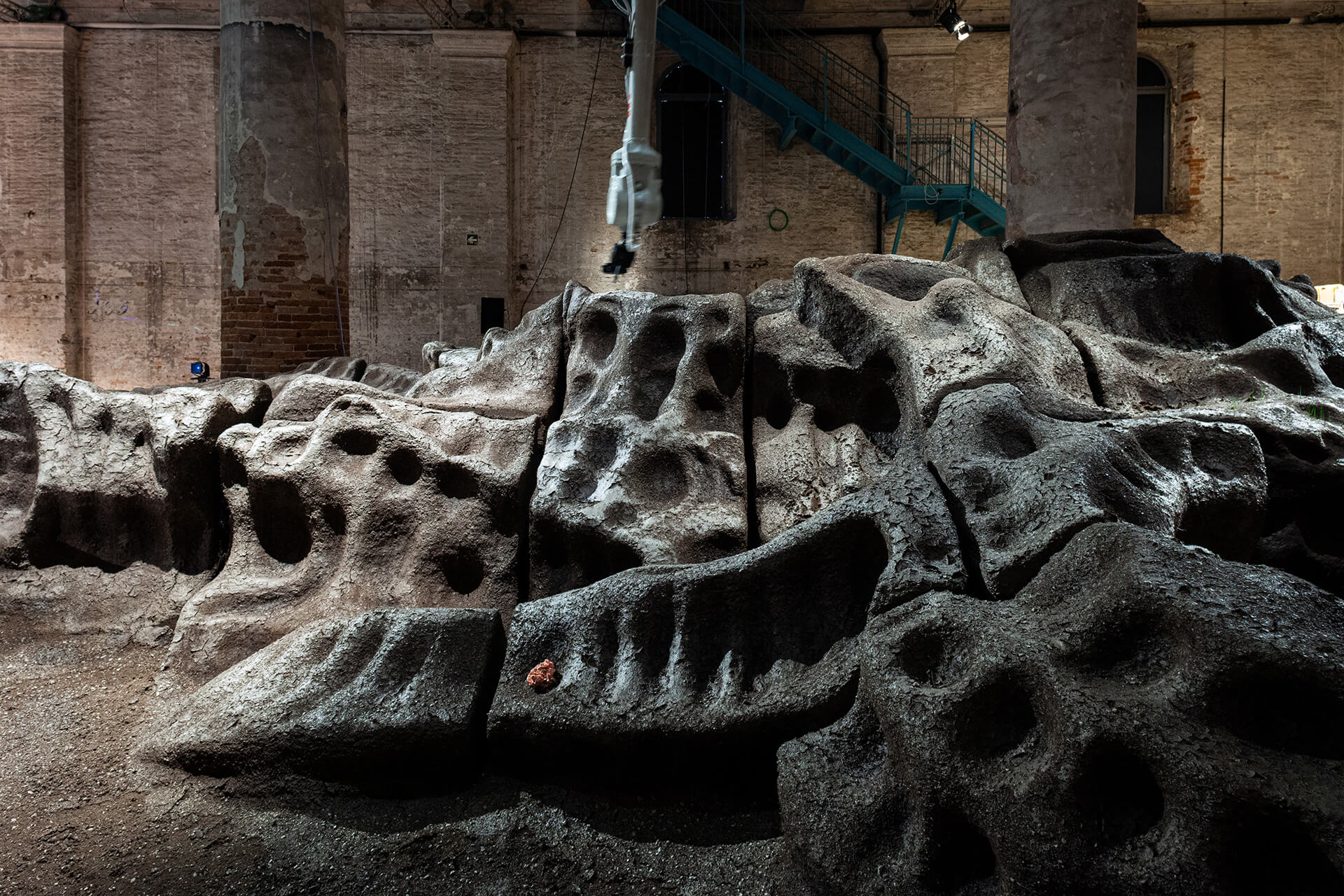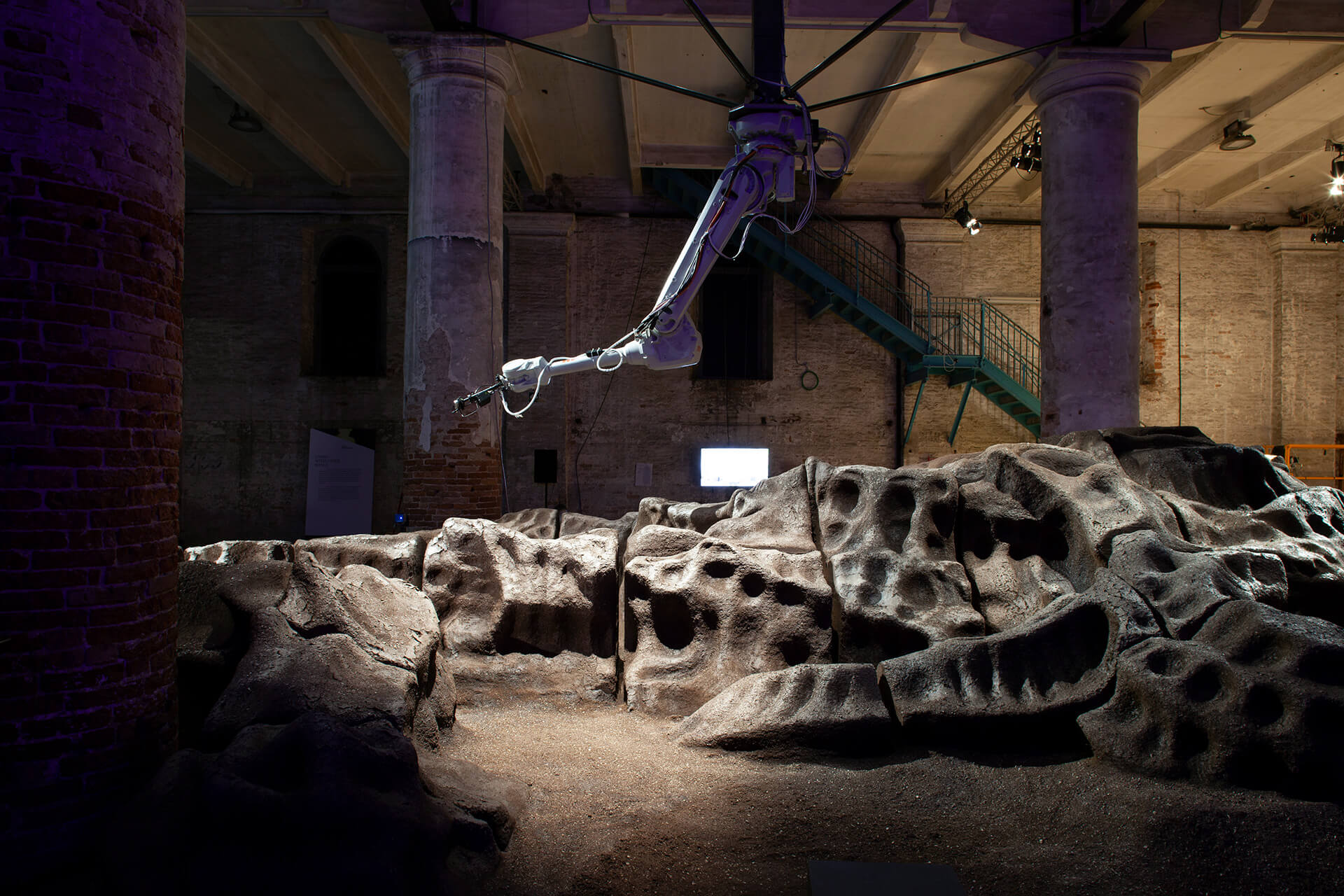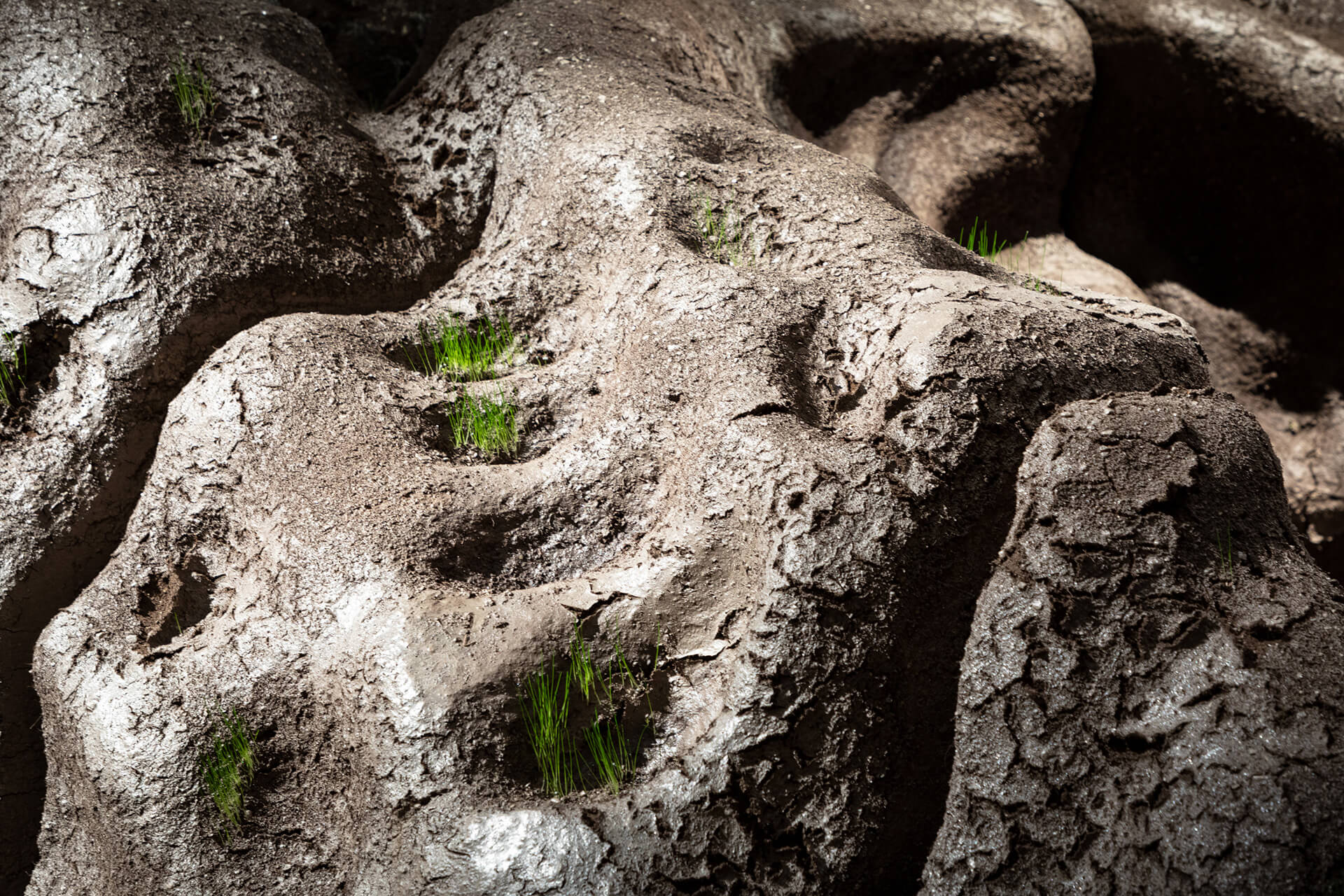Magic Queen represents a hybrid environment that incorporates and fuses biological systems with organic materials and machines, creating an ecosystem of empathy and co-existence. The project explores the deeper meaning of the relationship between nature, technology, and living systems favoring the creation of an ecology of non-human subjects. In this scenario, Magic Queen is conceived as a built habitat that can restore and nurture itself, redefining the role of living systems within architecture. The space is a performative soil-3d printed robotic garden that uses sensors, responsive technologies, and machine learning to create continuous feedback between sensing, virtualizing, and induced change. The inhabitable space of Magic Queen combines visual, auditory, olfactory, and haptic features to capture the sensual experience of this new mediated form of nature, which evolves around and within different media and forms of representation. Nothing in Magic Queen could exist without the presence of the other, underlining the nature of interconnectivity in biological entities. The fungal flora and the soil structure depend on the robot to mother them. At the same time, the robot relies on their existence to move. The ambient sound is generated through the interconnectivity and performativity of all elements, accompanied by a visual interface uncovering the otherwise invisible stream of impact and growth. The installation, a section of this future scenario, is left to its own devices to recreate and regenerate itself amidst a global pandemic continuously. Hanging upside down and observing the underlying terrain is the robotic gardener, caressing and scanning the underlying topography, a techno-organic soil landscape. The robotic gardener is equipped with two types of tools and sensors: First, a watering system to garden the seeds of the mushrooms in the soil, and second, a machine vision system to detect and register any changes in the surface texture and growth of biological entities on the structure. The ambient sound is a mixture of artificially produced sounds and natural tones, which is continuously influenced and manipulated by the movements of the hanging robot and the changes in the structure. The entirely biodegradable soil landscape is fabricated using a new robotic binder-jetting process for granular biocomposites and non-toxic organic binding agents. The 3D printed terrain shows the potential of a fully reversible construction process for architectural and landscape components. Magic Queen is a performative architecture, an amalgamation of individual subjects (human and non-human) and technologies to create an environment where manufacturing, machine vision, sensor systems, visual, auditive, and olfactory interfaces are part of the built environment.
MAEID
Collaborators:
Project Team:
Alex Karaivanov, Noor Khadher, Andrea Cancian
Structural System:
Johann Riebenbauer
Fabrication Team:
Maria Edurne Morales Zuniga, Bahar Al Bahar, Rodrigo Perez Hernandez, Andreea Bunica
Student Workshop:
Julian Edelmann, Federico Gomarasca, Raphaela Elisabeth Haller, Ludwig-Valerius Rieger, Thomas Victor Philippe Sicouri, Zeno Zoppi
Visual Interface: Andrea Reni
Music and Sound Design: Lukas Lauermann, LOREM, Luca Pagan
AI and machine vision system: Martin Gasser
Supported By:
ABB, Bundeskanzleramt Wien / Federal Chancellery Republic of Austria, Universität für Angewandte Kunst Wien, Stadt Graz, Land Steiermark, Leopold-Franzens-Universität Innsbruck – Institut für Experimentelle Architektur, Department of Microbiology
Photography:
© Zita Oberwalder
© MAEID




